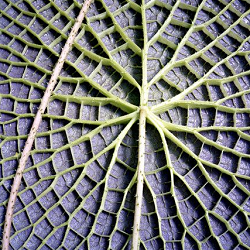Biology is the most prolific inventor and producer of complex functional materials – how can we do the same?
I am interested in understanding how nature controls patterns in the structures it makes. The ridges of the waterlily leaf are naturally evenly-spaced, creating a leaf that is strong, light and efficient. This pattern is generated by an interplay between signalling and physical forces controlling the behaviour of the individual cells in the leaf. Most impressively, all the information needed to produce the leaf is encoded within any given cell of the leaf in its genetic code.
In my research I am interested in understanding to generate patterns through signalling and physical forces, and how this process can be regulated using genetics. A better understanding of these processes could allow us to develop novel biomaterials with tailored properties and structure. These materials could be produced incredibly sustainably as they could be recycled with the same processes that nature uses to recycle.
I am in particular studying a computational model of pattern formation in a bacterial colony. I am using this computational simulation to design new pattern forming genetic architectures that would be engineered into synthetic bacterium. This would be the first step towards designing custom biomaterials.
Unlocking nature’s methods for producing materials would open exciting new routes for producing clever materials that can be produced sustainably nearly indefinitely.
Matthew Griffiths
NanoDTC PhD Student Cohort 2013
Department of Chemistry

